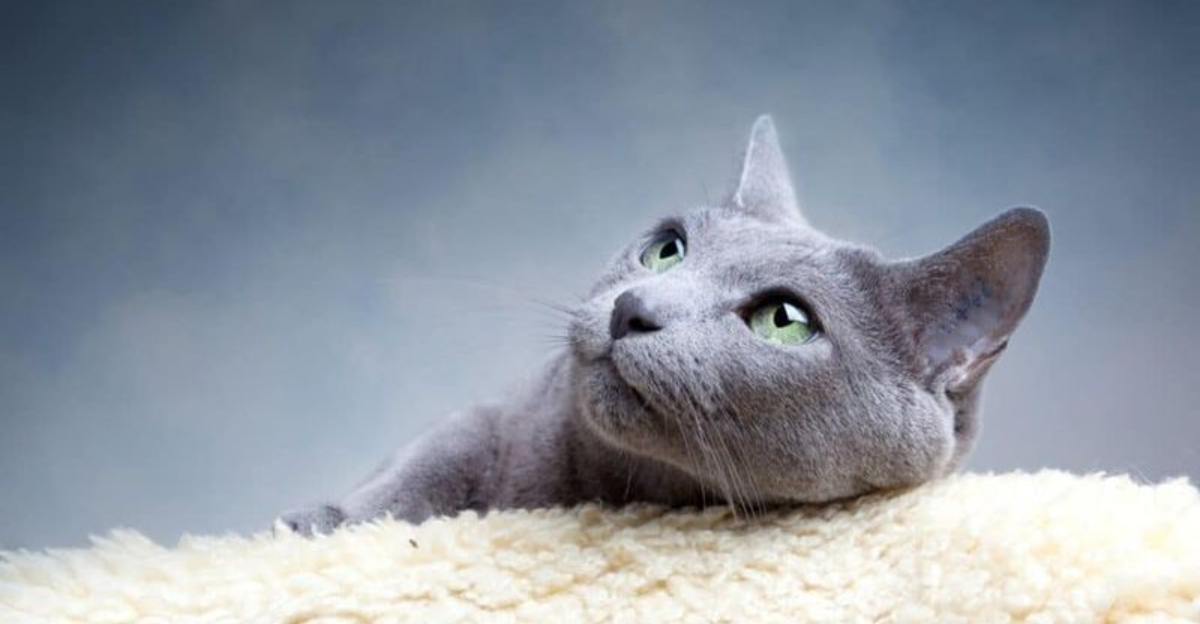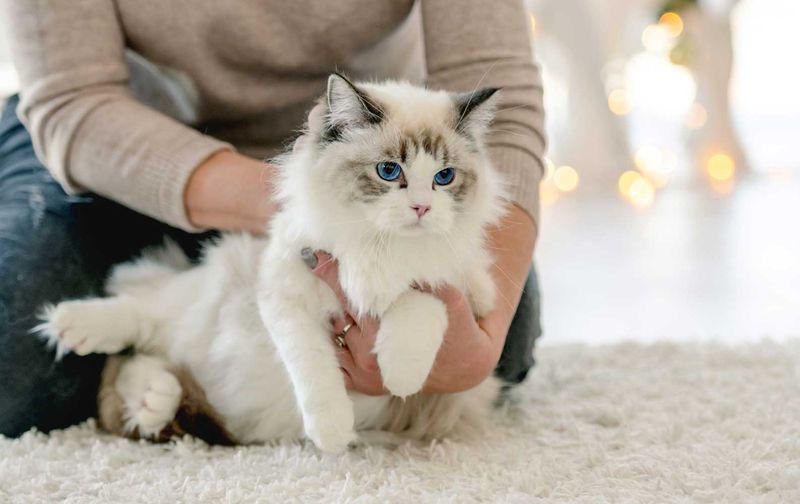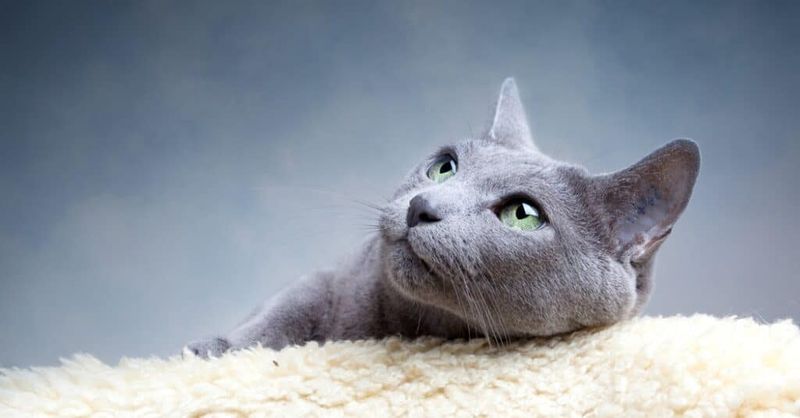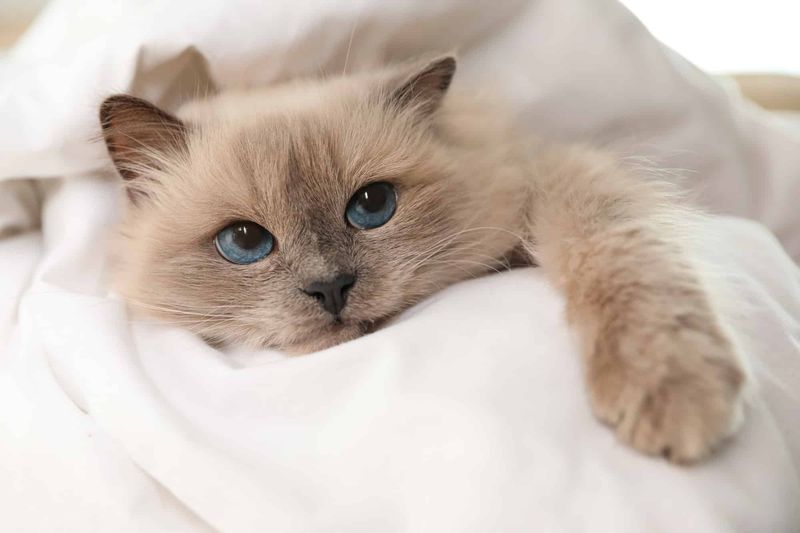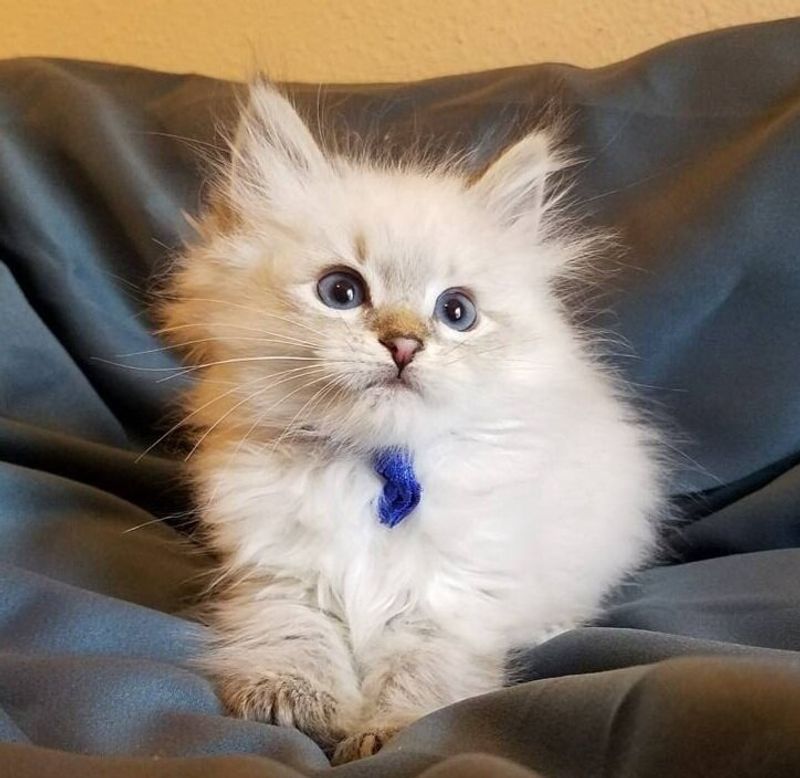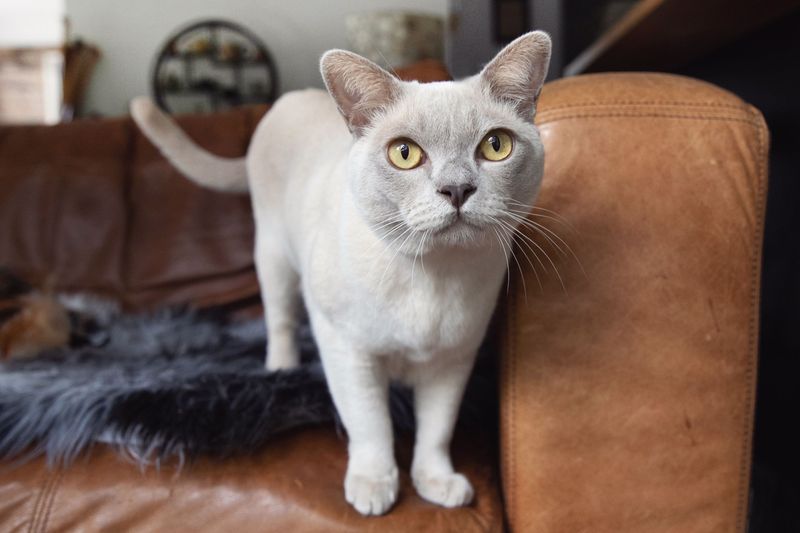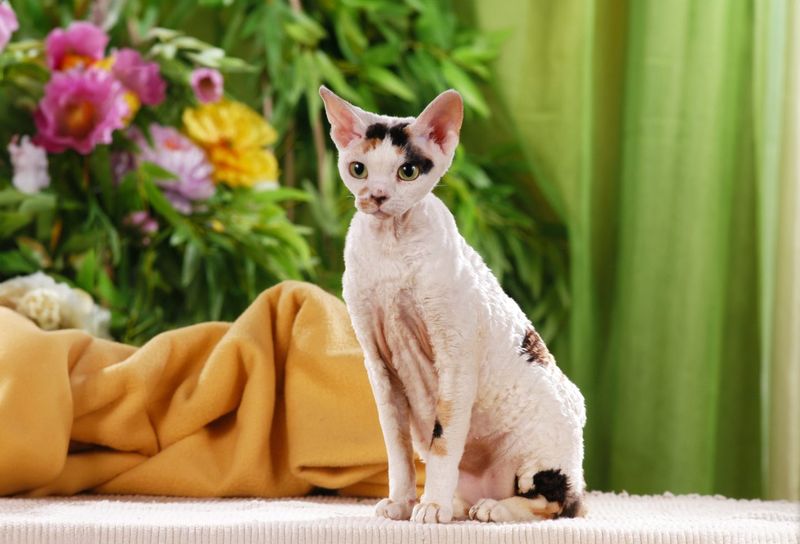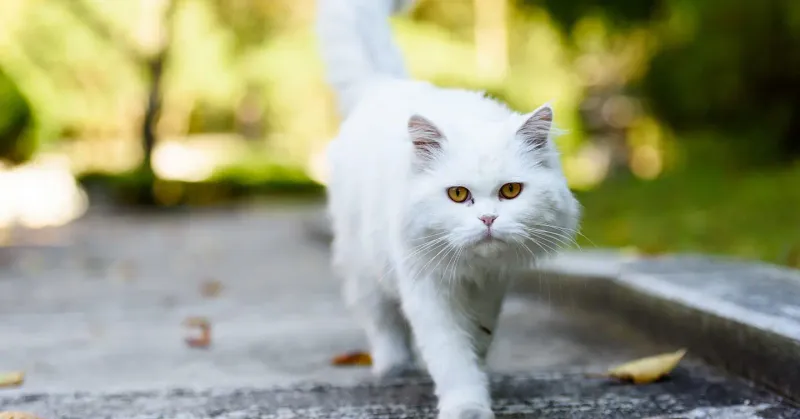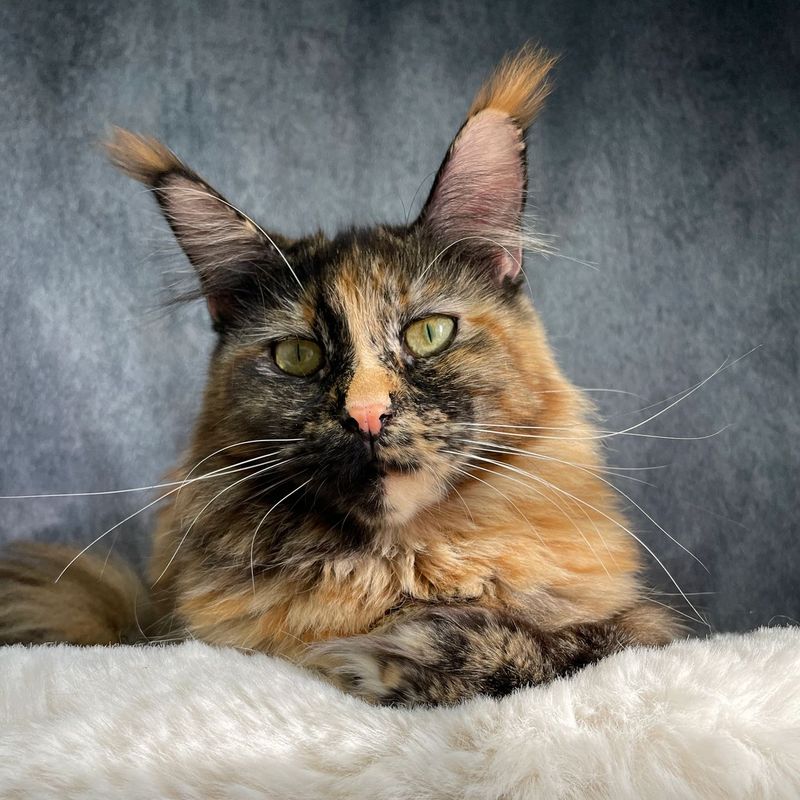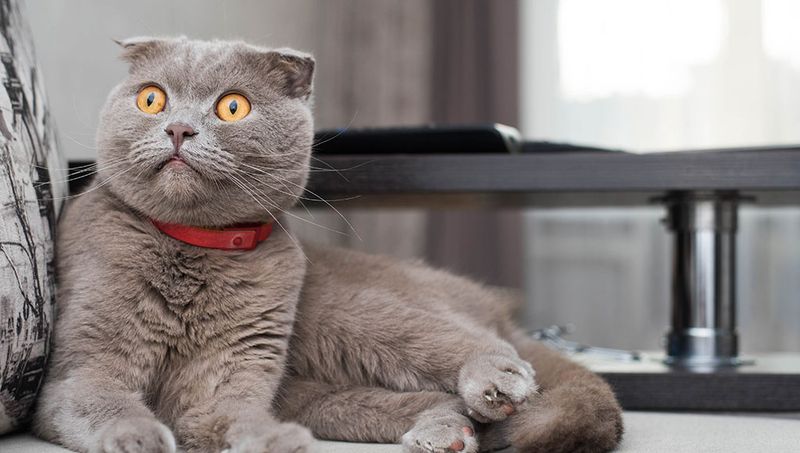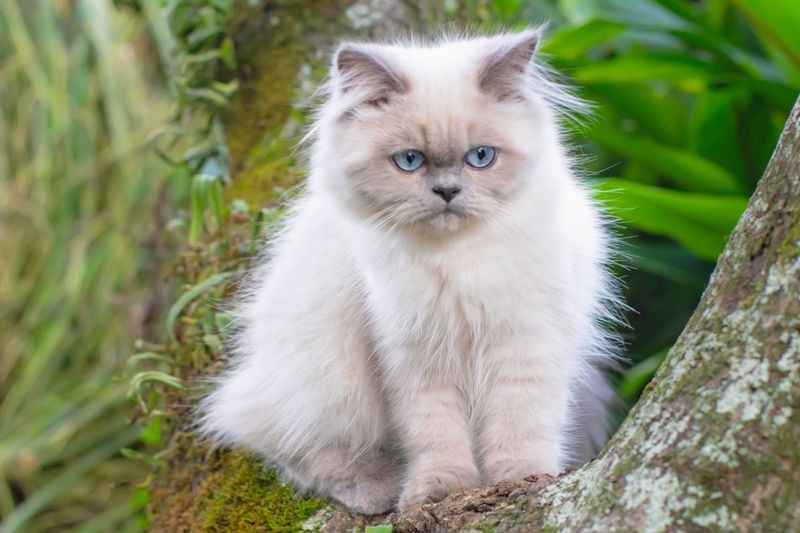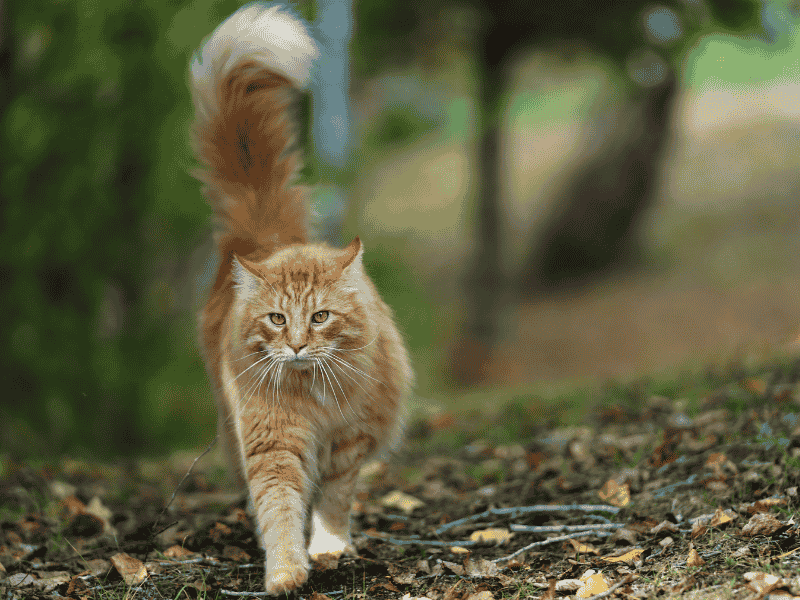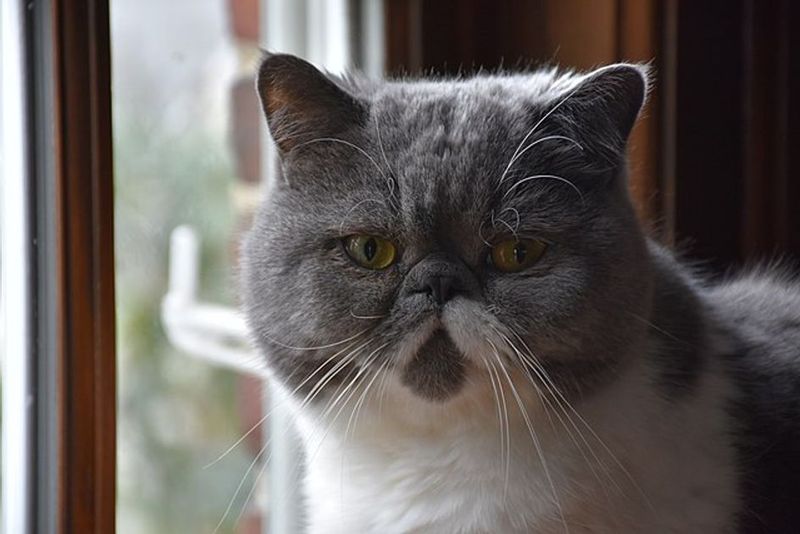📖 Table of Content:
Cats are admired for their elegance and grace, and their coats often play a big part in that appeal. From sleek and shiny to long and luxurious, feline fur comes in many textures. Each type requires a different level of care and attention.
Certain breeds are celebrated for having exceptionally soft, plush coats that invite touch. Others may have denser or more high-maintenance fur that demands regular grooming to avoid tangles or mats. The variety in coat types reflects not just beauty but also breed-specific needs.
Recognizing these differences is essential for maintaining a cat’s comfort and health. Coat type can influence grooming routines, allergy considerations, and even bonding experiences. A well-maintained coat not only enhances appearance but also contributes to overall wellbeing.
1. Ragdoll
Ragdolls possess some of the silkiest fur in the feline world. Their semi-long hair lacks the dense undercoat that many other long-haired breeds have, resulting in minimal matting and shedding.
The plush coat feels like rabbit fur to the touch, with a texture that’s both soft and substantial. Despite their luxurious appearance, Ragdolls require less maintenance than you might expect.
Weekly brushing is usually sufficient to keep their coat in top condition. Their fur comes in pointed patterns with blue eyes being a signature trait, making these gentle giants as beautiful as they are soft.
2. Russian Blue
Touching a Russian Blue’s coat is like running your hand over velvet. Their thick, plush fur stands slightly away from the body, thanks to evenly matched top and undercoat hairs. It’s one of the most unique and charming features of the breed.
Their silvery-blue fur contains a natural shine that catches the light beautifully. The coat is remarkably low-shedding despite its density.
Many people with mild cat allergies find Russian Blues more tolerable since they produce less of the Fel d 1 protein that triggers allergic reactions. These elegant cats are living plush toys with a sophisticated appearance and touchably soft fur.
3. Birman
Birmans captivate with their medium-long silky coat that lacks the thick undercoat of many longhaired breeds. Their fur flows gracefully along their body with minimal tangling, feeling like cool silk to the touch.
The signature white “gloves” on their paws feature an even softer texture that many owners find irresistible. Color points decorate their face, ears, legs and tail while the body remains lighter in shade.
Their fur naturally repels dirt and rarely mats, making maintenance simple with just weekly brushing. Birmans shed seasonally but not excessively, keeping their luxurious coat manageable while still providing that satisfying soft-fur experience cat lovers crave.
4. Siberian
With a water-resistant topcoat and soft, dense undercoat, Siberians have a triple-layered coat built for cold climates. This adaptation offers excellent protection during harsh Russian winters. The fur feels remarkably soft and full to the touch.
Despite the thickness, their coat has a silky quality that prevents excessive matting. The fur around their neck forms a magnificent ruff that’s particularly soft and fluffy.
Many Siberian owners report their cats feel oilier than other breeds – this natural oil helps waterproof their coat and contributes to the distinctive softness. Surprisingly, this breed is considered hypoallergenic for many allergy sufferers despite their abundant fur.
5. Burmese
Burmese cats feature exceptionally fine, close-lying fur that feels like warm satin under your fingers. Their short coat has a distinctive sleek quality that makes petting them a uniquely satisfying experience.
The lack of undercoat contributes to their silky texture and makes their muscles more defined beneath the fur. Their coat naturally maintains a high gloss that reflects light beautifully, especially in solid colored Burmese.
Minimal shedding means their softness stays on the cat rather than your furniture. The fur feels warmer to the touch than many other breeds, adding to the pleasant sensation when they curl up in your lap for cuddles.
6. Cornish Rex
Lacking guard hairs, the Cornish Rex displays only the fine undercoat, which is unusually soft and wavy. This produces a unique tactile experience often compared to suede or velvet.
Their fur grows in tight, marcel waves close to the body. The absence of guard hairs means there’s nothing coarse or rough when you pet them.
Many owners describe the sensation as similar to petting a warm, soft rabbit or a plush stuffed animal. Their minimal shedding and unique texture make them favorites for people who love soft-furred cats but want something distinctly different from the typical feline coat.
1. Persian
With their long, heavy double coats, Persian cats need daily grooming. Their thick undercoat and flowing topcoat easily trap tangles. Even short periods of neglect can lead to matting.
Oil from their skin travels down the lengthy hair shafts slowly, making their coat prone to dryness and static. Daily combing with a wide-toothed metal comb followed by a fine-toothed comb is necessary to prevent painful matting.
Regular bathing every 4-6 weeks helps maintain coat quality and cleanliness, especially for show Persians. Their facial structure adds another grooming challenge as tear stains require daily cleaning to prevent staining of the facial fur.
2. Maine Coon
Maine Coons feature a shaggy, water-resistant coat that evolved for harsh New England winters. Their uneven triple-layer coat includes longer guard hairs, a medium layer, and a soft undercoat that work together to repel moisture and provide insulation.
Their fur length varies across their body, with longer fur forming a protective ruff around the neck and impressive britches on the hind legs. The silky texture tangles easily, especially in high-friction areas like under the legs and behind the ears.
Seasonal shedding brings dramatic fur loss twice yearly when the undercoat releases in large quantities. Without regular brushing, their fur quickly becomes a matted mess that can require professional grooming intervention.
3. Scottish Fold
Though Scottish Folds appear low-maintenance due to their medium-length fur, their dense double coat requires regular grooming. The thick undercoat sheds year-round and can get caught in the top layer of fur. If neglected, this can lead to matting near the skin that’s easy to miss.
Their rounded body shape creates crevices where fur tangles frequently, particularly around the folded ears, neck and hindquarters. The coat’s density varies seasonally, with dramatic shedding occurring twice yearly.
Without regular brushing, these cute-faced felines can develop painful mats that require professional intervention. Their tendency toward sedentary behavior means they’re less likely to self-groom effectively, making human intervention even more necessary.
4. Himalayan
Combining Persian length with Siamese coloring, Himalayans are beautiful but high-maintenance. Their fur lacks protective oils, making it prone to tangling. Daily brushing is necessary to avoid mats and keep the coat healthy.
The contrast between their pale body and darker extremities means staining shows prominently on light areas. Their flat faces lead to excessive tearing that can stain the facial fur if not wiped daily.
The texture of their coat varies between fine and cottony depending on genetics, with the cottony variety being particularly prone to matting. Seasonal shedding transforms these elegant cats into fur-producing machines that can quickly overwhelm unprepared owners.
5. Norwegian Forest Cat
Norwegian Forest Cats developed their substantial waterproof coat to survive Scandinavian winters. The dense woolly undercoat combines with long, coarse guard hairs and a water-repellent top coat to create a wilderness-ready but maintenance-heavy fur situation.
Their coat features dramatic seasonal changes, with a thinner summer coat transforming into an impressive winter mane. The texture varies across their body, with coarser fur on top and softer, more tangle-prone fur underneath.
During shedding seasons, these cats release fur in large clumps that will mat painfully if not removed. Their ear tufts, toe tufts, and magnificent tail require special attention to prevent tangles from forming in these decorative but problematic areas.
6. Exotic Shorthair
Exotic Shorthairs may seem low-maintenance with their shorter fur, but their extraordinarily dense plush coat requires more care than appearances suggest. Their thick undercoat packs tightly beneath shorter guard hairs, creating a stuffed-animal texture that traps shed fur efficiently.
Without regular brushing, the dense undercoat becomes compacted and matted close to the skin. Their flat faces create tear stains that require daily cleaning to prevent skin irritation and fur discoloration.
Seasonal shedding transforms these teddy-bear cats into fur fountains that can overwhelm even dedicated groomers. The density of their coat makes it difficult for them to groom themselves effectively, leaving humans responsible for managing what their tongues cannot reach.
